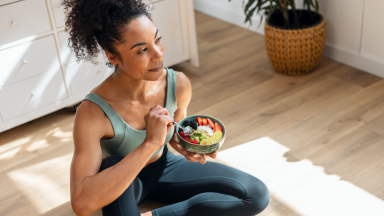Older Hispanics are revered as cultural stewards of their families for many reasons, but one in particular is the flavor-rich traditions that are reflected in their shopping carts and in their homes.
Today, Latinos 50 and older are at the epicenter of the evolving social and cultural reality of this demographic, which is more likely than the general population to have several generations living under one roof. As such, consumption behaviors, buying habits and cooking styles reflect the needs of multiple age ranges in the household. With shopping baskets that boast more dried vegetables, grains, fresh eggs, meal starters and baby foods than total Hispanics, it’s no surprise that 73% of Hispanics 50 and above say they cook in rather than eat out. And when it comes to what they’re making, 62% of older Hispanics use recipes and adopt cooking styles from their countries of origin.
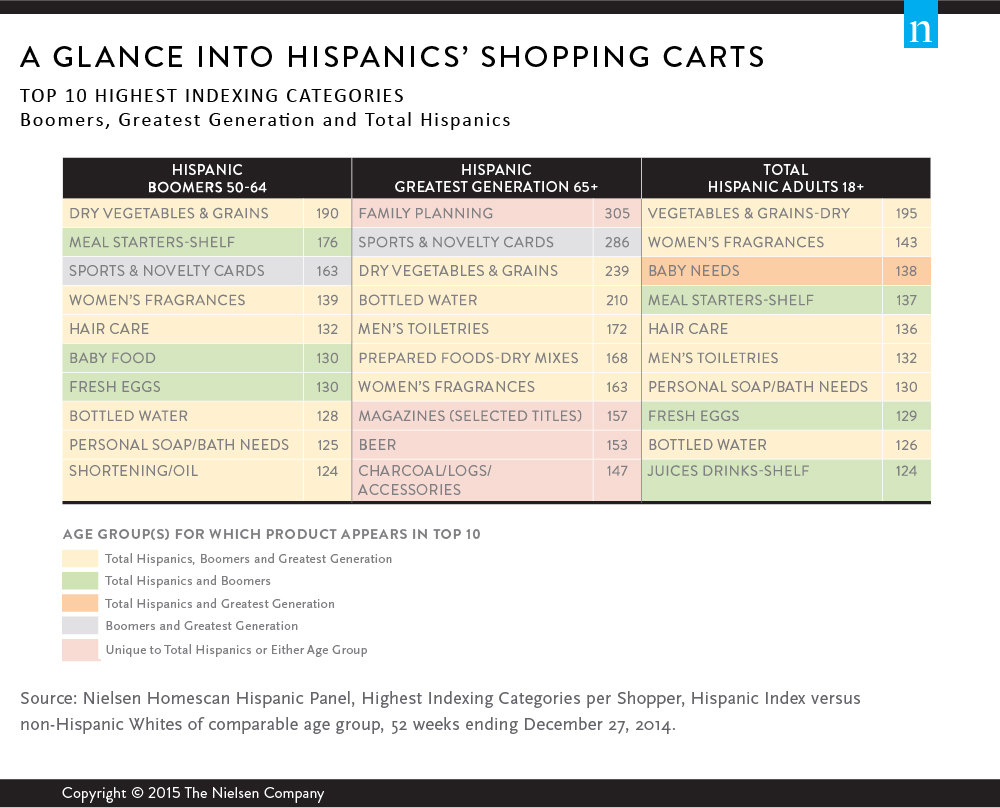
Possibly to support their inclination toward eating in, these consumers shop more frequently than the general population as well. In fact, Hispanics 50-plus are buying more frequently than non-Hispanic white peers in nearly 75% of all major departments. Hispanic Boomers make more trips than non-Hispanic white peers to warehouse club stores than non-Hispanic whites peers (17 trips vs. 13) while Greatest Generation Hispanics make more trips to grocery stores (71 vs. 64).
Another shopping channel for older Hispanics are bodegas. Bodegas are smaller, typically independent, neighborhood markets that stock many everyday items for cooking, along with traditional ethnic items that historically have been difficult to find in other outlets. Bodegas allow Hispanics to reconnect with favorite foods and flavors from their countries of origin. At one time, bodegas were the only source of many native products from home, such as spices and marinated meats and other ethnic specialties, but bodegas’ market share has made traditional retailers pay attention to the cultural background of these avid shoppers.
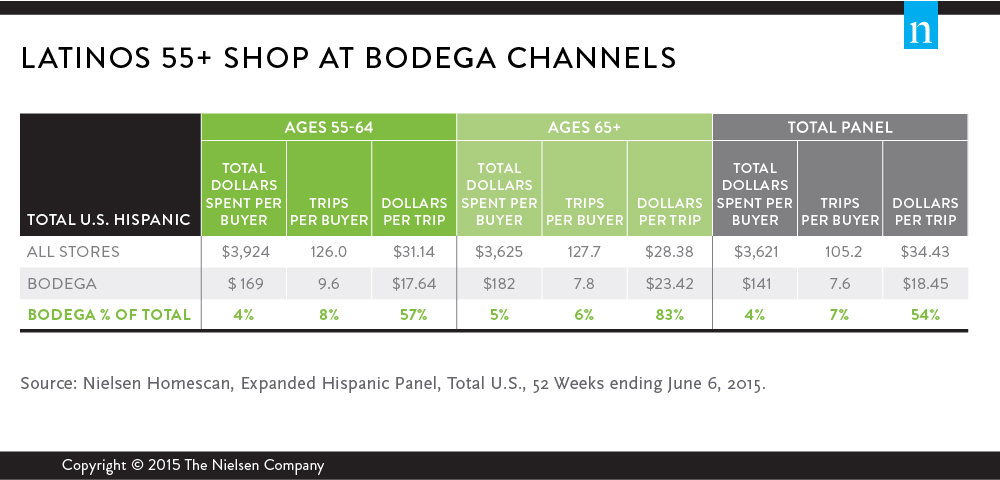
A PREFERENCE FOR BRANDS
Latinos 50 and older also prefer branded items over store brand or private-label goods. The preference increases with age, as the eldest shoppers of the group (65+) purchased a branded item at least 141 times, compared with 75 times for a store branded item last year. Overall, older Hispanics are more brand loyal than other Hispanic and non-Hispanic white consumers. This preference likely stems from a strong affinity and familiarity with brands from their native countries, and this sentiment remains a strong driver when making purchasing decisions.
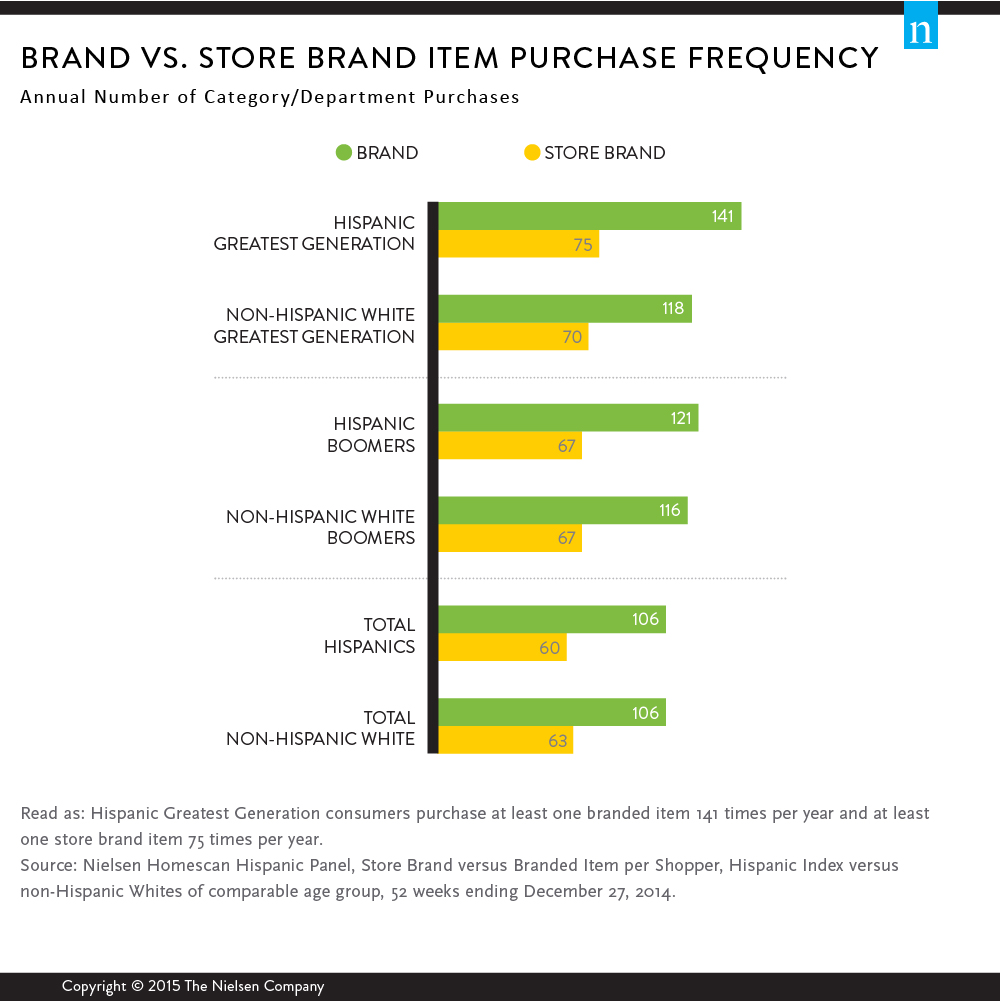
Older Hispanics Are Health Conscious
Marketers and advertisers of organic brands have an opportunity to connect with older Hispanics. Just as traditional cooking styles play a role in the households of older Hispanics, so to do healthy eating habits. Both Boomers and Greatest Generation Hispanics, particularly those who are foreign-born, say they regularly eat organic foods. In addition, foreign-born older Hispanics and U.S.-born Hispanics 50-64 are both significantly more likely than non-Hispanic white peers to say they will not allow junk food in their home.
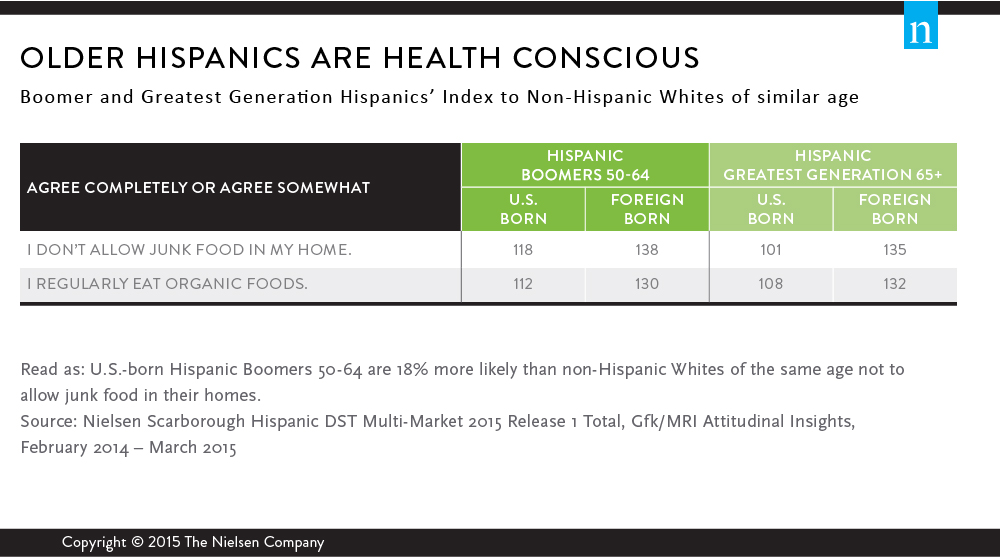
Additional insights from the New American Vanguard: Latinos 50+ report include:
- Hispanic Boomers (50-64) watch 162 hours of traditional TV per month.
- Foreign-born Hispanics 65 and older think of their mobile phones as a source of entertainment at a level 84% higher than non-Hispanic white peers.
Methodology
Homescan Hispanic Panel: This panel comprises a randomly dispersed sample of households that is intended to be representative of, and projectable to, the total U.S. market. Panel members use handheld scanners to record items with a UPC code that they purchase from any outlet. Data for this report contains English-preferred, bilingual and door-to-door recruited Spanish-preferred households and is based on Homescan panel data from the following period: 52 weeks ending Dec. 27, 2014. Bodega data is derived from Homescan Expanded Hispanic Panel, which contains English-preferred, bilingual and door-to-door recruited Spanish-preferred households, for the following period: 52 weeks ending June 6, 2015.
Nielsen Scarborough Hispanic DST Multi-Market 2015 Release 1, GfK/MRI Attitudinal Insights Module: The base for these insights represent adult respondents who were 18 and above; projected: 135,909,196, respondents: 122,689). By integrating more than 400 attitudinal statements and segmentations with Nielsen Scarborough’s data set, this analysis reflects consumer psychographics in the studied categories among both English- and Spanish-speaking adults from the period of February 2014 to March 2015.
